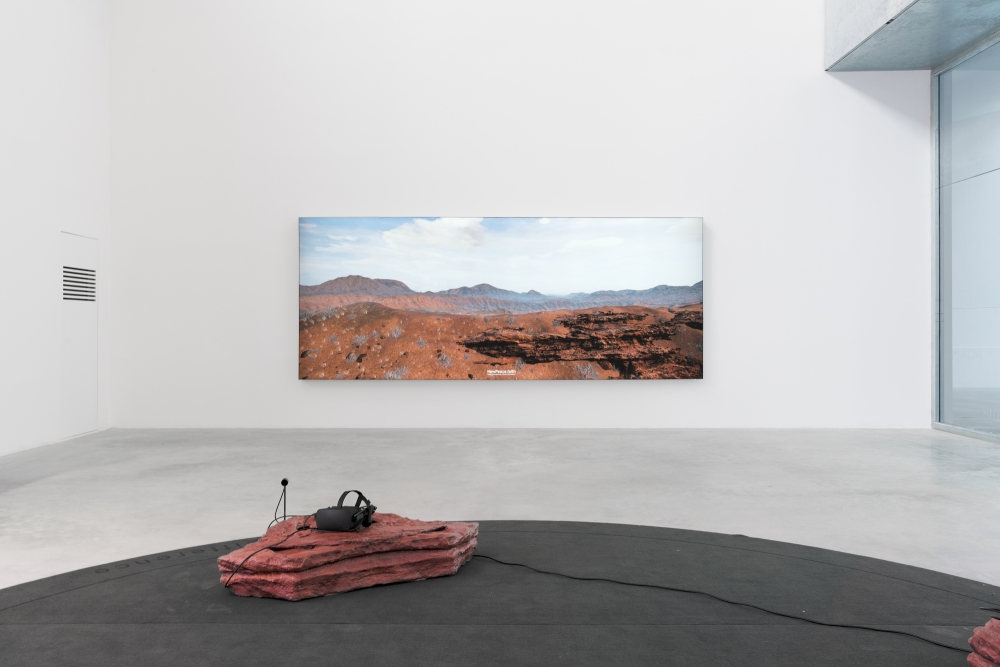Timur Si Qin
Campaign for A New Protocol
While his most enduring concern over the last decade has been with the dynamics of branding and the formation of patterns in commercial imagery, Timu Si-Qin’s series, New Peace, further develops this line of thought into a proposal for a new mysticism. Stemming from a rethinking of the anthropocene, the geological epoch starting with the Industrial Revolution during which humanity has begun to have a significant impact on the environment, New Peace rejects the old dualisms of nature vs. culture and spirit vs. matter, instead fostering a non-dual conception of reality. It is a new protocol to understanding one’s place in the vastness of time and space and a toolkit for building new myths and meanings for a world undergoing profound changes. A radically inclusive, secular faith of the real, forwarding a belief in the true infinite creativity of pattern, matter, and energy.
Life on this planet stands at the cusp of a great threshold. As we awaken to the full scale of space and time, we awaken also to our own capacities for altering our planet and ourselves. Now more than ever, humans need to construct new myths and express a new sense of spirituality. Religions have always been technologies of belief, protocols for organizing environmental and social interactions. But today’s faiths, adapted for ancient agrarian conditions, no longer serve us, and in fact imperil our survival. New Peace rejects the old dualisms of nature vs. culture and spirit vs. matter, instead fostering a non-dual conception of reality. It is a new protocol to understanding one’s place in the vastness of time and space and a toolkit for building new myths and meanings for a world undergoing profound changes. A radically inclusive, secular faith of the real. A mysticism for the anthropocene that fosters a spiritual relationship to matter itself. No divine beings, transcendent realms or eternal essences necessary: only the true in nite creativity of pattern, matter, and energy.
In Campaign for A New Protocol, Si-Qin launches a drive to communicate a new sense of non-dualistic and secular spirituality adapted for the future. A virtual world comprised of intricately rendered digital landscapes, New Peace proverbs present a spiritual framework for the world of the contemporary and the future. Here, the natural and the synthetic coalesce in a space beyond the spirit/matter dualities New Peace seeks to shed.
About the Artist
Timur Si-Qin is an artist and writer whose work imagines new protocols of spirituality in the face of climate change and biodiversity collapse. Born in 1984 Berlin, Si-Qin grew up in a German, Mongolian/Chinese and San Carlos Apache Native American family in the American Southwest. This unique blend of cultures and perspectives, combining indigenous upbringing with diverse global influences, deeply informs his work. Si-Qin’s work often explores the concept of “New Peace,” the proposal of a post-secular faith that reestablishes the sacredness of nature in a contemporary globalized, and technologically saturated world. Using hyper-real renderings of wilderness and 3d printed sculptures, Si-Qin’s work challenges traditional distinctions between the natural vs. cultural, the human vs. non-human, the organic vs. synthetic. Through New Peace, individual works aggregate into an ecosystem of signifiers and distributed meaning systems, seeding new narratives for our relationship with the natural world in the 21st century.
His work has been extensively shown in solo exhibitions in Europe, the United States, and Asia, and was included in exhibitions at The High Line, New York; Schirn, Frankfurt; K11 Art, Shanghai; Musée d’Art Moderne, Paris; Ullens Contemporary Art Center, Beijing; Hamburger Bahnhof, Berlin; KW Institute for Contemporary Art, Berlin; and Kunsthalle Wien, among many others. He has participated in large-scale international exhibitions such as the Bangkok Art Biennale, Bangkok; Diriyah Contemporary Art Biennial, Saudi Arabia; Kunsttriennale Beaufort, Belgium; Riga International Biennial Of Contemporary Art, Latvia; Ural Biennale, Russia; 9th Berlin Biennale; Germany; and Taipei Biennial.
